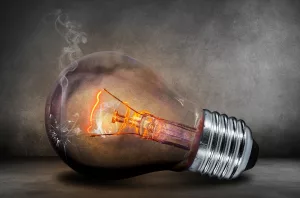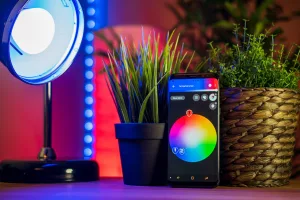In the world of interior design and home improvement, lighting plays a crucial role in creating the right ambiance and enhancing the aesthetics of a residential property. Lighting not only illuminates a space but also affects our mood, productivity, and overall well-being. Over the years, lighting for residential properties has seen a remarkable transformation, moving beyond the humble light bulb to embrace innovative and energy-efficient solutions. In this blog post, we will explore how residential lighting has evolved and highlight the top trends in lighting design and technology.
The Evolution of Residential Lighting
1. Incandescent Bulbs: A Historical Perspective
For decades, incandescent bulbs were the go-to lighting source for homes. These bulbs worked by heating a filament inside, which produced light. While they were effective, they were not energy-efficient and had a short lifespan. The shift away from incandescent bulbs was prompted by environmental concerns and the need for more cost-effective alternatives.
2. Compact Fluorescent Lamps (CFLs)
CFLs were introduced as a more energy-efficient alternative to incandescent bulbs. They consumed less energy and had a longer lifespan, making them a popular choice. However, CFLs had drawbacks, including slower warm-up times and the presence of mercury, which raised concerns about environmental impact.
3. Light Emitting Diodes (LEDs)
The introduction of LED lighting was a game-changer in residential lighting. LED bulbs are extremely energy-efficient, lasting much longer than both incandescent bulbs and CFLs. They are also available in a wide range of colours, and their brightness and colour temperature can be adjusted to create different atmospheres in your home. LED lighting has become a staple in modern residential lighting design.
4. Smart Lighting
One of the most significant recent advancements in residential lighting is the integration of smart technology. Smart lighting systems, often controlled through smartphones or voice-activated assistants, offer homeowners the ability to adjust the lighting in their homes remotely, set schedules, and even change colours. This not only enhances convenience but also contributes to energy savings and home security.
5. Energy Efficiency
The shift towards energy-efficient lighting options like LEDs and CFLs has been a significant trend. Homeowners are now more conscious of their energy consumption and its impact on the environment. This has led to an increased focus on lighting solutions that are both environmentally friendly and cost-effective.
The Future of Residential Lighting
As technology continues to advance, the future of residential lighting is likely to see even more innovative changes. Some trends to watch for include:
- Human-Centric Lighting: Lighting designed to mimic natural sunlight to support well-being and productivity.
- Wireless Charging Lamps: Lamps that can wirelessly charge your devices while providing illumination.
- Interactive and Artistic Lighting: Lighting fixtures that serve as art pieces and adapt to user preferences.
- Biophilic Lighting: Integrating natural elements and patterns into lighting design to create a connection with nature.
In conclusion, the world of residential lighting has evolved significantly from the simple incandescent bulb. Homeowners now have access to a wide array of lighting options that are energy-efficient, technologically advanced, and capable of enhancing the aesthetics and functionality of their living spaces. As the demand for sustainable and smart home solutions continues to grow, we can expect the future of residential lighting to be even more exciting and dynamic. Whether you’re looking to create a cozy atmosphere or an efficient workspace, modern residential lighting has a solution for you.
For further information and assistance with your lighting design requirements, call us on 020 8908 6820 or drop us an email at contact@harrowlighting.com. Together let’s make your dream become a reality!

















